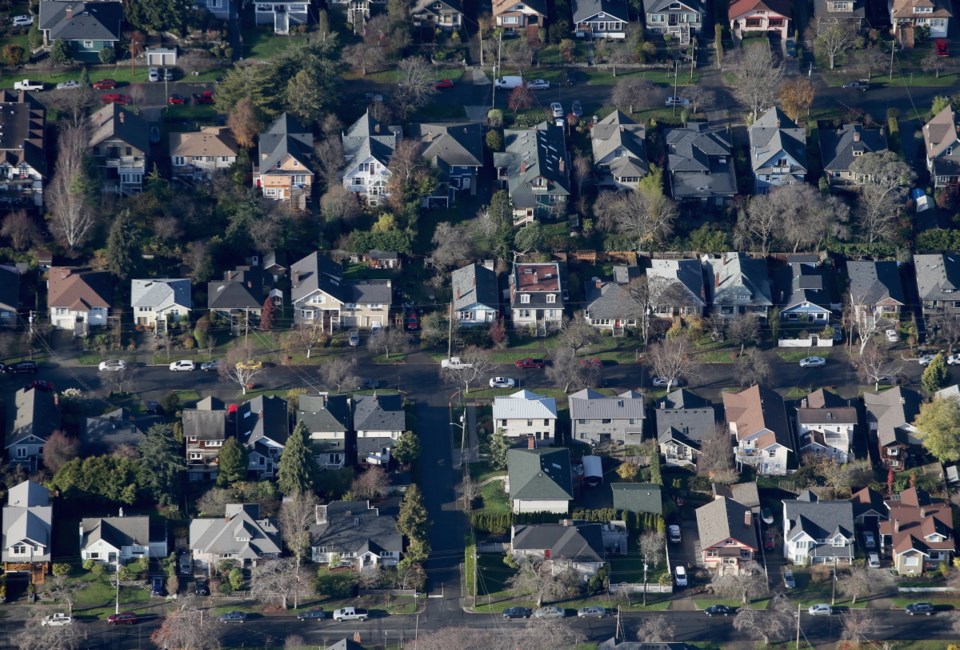Sales of residential properties in sa¹ú¼Ê´«Ã½ last month climbed from a record low in April, but remained nearly 40 per cent lower than the same month in 2019.
The real-estate sector is in recovery mode, with some bright spots in the wake of the COVID-19 pandemic.
“The big picture is things are moving in the right direction but still have a long way to go,” Shaun Cathcart, senior economist with the Canadian Real Estate Association, said in a statement Monday.
Sales and new listings declined, then both moved up again. As overall supply is falling, “prices appear to be holding firm at this point,” Cathcart said.
Data released by the association shows the actual number (not seasonally adjusted) of national sales fell by 39.8 per cent from May of last year.
From April to May this year, sales jumped by 56.9 per cent, the association said — noting, however, that April sales were the lowest on record. May sales numbers were at their lowest since the mid-1990s.
The national average price for homes sold last month was $494,500, a drop of 2.6 per cent from the same month the previous year.
The national average price is heavily influenced by sales in Greater Vancouver and the Greater Toronto Area, two of sa¹ú¼Ê´«Ã½’s most active and expensive housing markets. Excluding these two markets from calculations cuts almost $94,000 from the national average price, trimming it to about $401,000, the association said.
Within sa¹ú¼Ê´«Ã½ alone, a total of 4,518 residential sales took place in May, down by 45.2 per cent from the same month last year, the sa¹ú¼Ê´«Ã½ Real Estate Association said Monday.
The number of sales in May was an increase from 3,284 in April. sa¹ú¼Ê´«Ã½ started to reopen parts of its economy and the real estate sector has adopted new procedures to protect buyers and sellers.
Declining year-over-year sales meant the overall dollar value of homes sold in sa¹ú¼Ê´«Ã½ slid in May to $3.3 billion, down 43.5 per cent from 2019, the association said.
Some price gains were seen. The average price for a home sold through the Multiple Listing Service in May was $728,898, up 3.2 per cent from the previous year, as most real estate boards in sa¹ú¼Ê´«Ã½ saw prices rise.
“There were encouraging signs of recovery in May,” said association chief economist Brendon Ogmundson. “While activity is still far below normal, both sales and listings are up significantly from April’s lows.”
New listings began picking up early in May, the association said. Even so, the total number of listings remains 24 per cent below May of 2019.
Year to date, the dollar volume of sales in sa¹ú¼Ê´«Ã½ was down by six per cent to $18.6 billion, compared with the same months in 2019.
In Greater Victoria, housing prices stand a good chance of remaining fairly stable in the wake of the pandemic, said Douglas Porter, chief economist and managing director at BMO Financial Group.
Victoria and Vancouver experienced small price gains in April after the economic downturn hit in March, Porter said in an online presentation to the capital region branch of the Urban Development Institute.
Benchmark prices for both single-family homes and condominiums in the Victoria core rose in April and May compared with the same months 2019, according to the Victoria Real Estate Board.
Porter does not expect to see significant changes in housing prices nationally. He predicted that even if there is a drop, it would likely not be more than five per cent within sa¹ú¼Ê´«Ã½ and it would be unlikely for that kind of decrease to happen in Victoria.
Prior to the pandemic, Porter figured the biggest risk to the real estate market was overheating.
Now, he said, “The froth has been knocked out of the market and we are probably looking at a better balanced market when the dust settles.”
Porter anticipates Canadians will continue to see low interest rates, which will be reflected in mortgage rates. “We think we are still looking at relatively tight [housing] supply situations in a number of key markets and we are still probably going to see relatively strong population growth.”
There’s not a huge difference among forecasters examining the overall effect of the virus, but Porter said he is on the less-pessimistic end of the spectrum.
“Our official call is for a six per cent decline in the Canadian economy and about a five and half per cent decline in the U.S. economy.”
These figures would represent the lowest numbers seen in the post-war economy, but, Porter predicted, “It is probably going also to be the shortest recession that we’ve ever seen, either.”
The downturn in March and April has been followed by an increase in jobs in sa¹ú¼Ê´«Ã½, a rise in home sales and improved housing-start figures. “We are actually seeing activity starting to come off the bottom.”
In coming months, Porter anticipates sa¹ú¼Ê´«Ã½ will see more jobs, more gains in spending and a stronger housing market.



